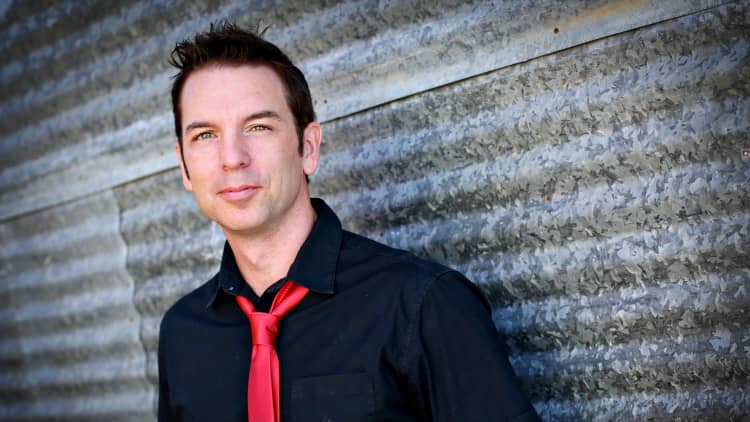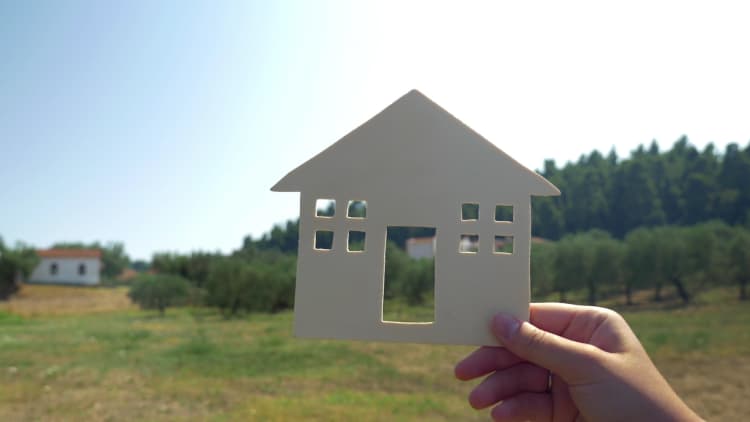If you're struggling to pay off debt, it can be difficult to know where to start. Do you tackle that credit card bill, or should you throw more money at your student loans?
Jennifer Bailey, a lifestyle blogger and creator of The Red Dress, confronted this challenge after realizing she owed $25,000 in student loans and $11,000 in credit card debt.
She found that the debt snowball method, an approach to debt repayment that celebrates small wins, was the most effective approach for her and her family. Here's how she applied this method to sweep away $36,000 in debt.
More from Student Loan Hero:
10 cheapest cities to live in when you're on a budget
How to decide if direct loan consolidation is right for you
Discover student loans review: Get cash back for good grades
Confronting a pile of debt
Jennifer first took on debt to attend Lee University, where she studied education and went on to work as a teacher.
"Immediately after graduation, I got a teaching position and, of course, began working to pay off my debt," says Jennifer. "However, I went on to get my master's and specialist degrees, so the debt kept piling up."
In addition to $5,000 in undergraduate loans, Jennifer took out $20,000 to fund her master's degree. Plus, she started overspending on her credit cards, not realizing how big her balance was getting.
"Although I had a 'budget,' I never truly stuck to it," says Jennifer. "I shopped often and bought what I wanted when I wanted. Since we didn't have kids at the time, we also ate out a lot and took several big trips."
Jennifer's financial wake-up call came when she realized she had accumulated $11,000 in credit card debt. She knew she needed to make drastic changes and come up with a plan, especially if she wanted to achieve her other goals in life.
"We have big goals of owning a vacation home, sending our daughters to the college of their choice, and traveling with our family," says Jennifer. To ensure they could meet those goals, Jennifer and her husband looked for a way to hit their debt hard.
She dug her way out with the debt snowball method
Jennifer learned about the debt snowball method from Dave Ramsey, of whom she's been a long-time fan. "I have used his budgeting tool since college, but never took his snowball method seriously until we realized we needed to take drastic steps before having children," she explains.
So how does the debt snowball strategy work? Let's defer to the expert himself.
"List all your debts, except for your home, from smallest to largest," says Dave Ramsey. "Make minimum payments on everything but the smallest debt, and attack that smallest debt with a vengeance."
The debt snowball has you tackle your smallest balance before moving on to the next. You'll still make the required minimum payments on all your debts, but you'll work on closing out the ones with the smallest balances as fast as possible.

For example, let's say you have credit cards with revolving balances of $1,000 and $7,000, and student loans with balances of $5,000 and $10,000.
With the debt snowball method, you'd first tackle your $1,000 credit card debt. Once that's paid off, move on to the $5,000 student loan. Once you finished paying that loan off, you'd work on paying off the next biggest, and so on.
Quick wins offer serious motivation
According to Ramsey, closing out even a small loan balance will push you to keep going. "It lights your fire," Ramsey says. "Quick wins get you motivated to keep going."
However, the debt snowball method does have one potential drawback: It won't necessarily save you the most on interest.
If saving money on interest is your priority, consider the debt avalanche method instead. The avalanche strategy requires you to pay off the debt with the highest interest rate first, rather than prioritizing the smallest balances.
The debt avalanche method saves money on interest, but it could take longer before you completely close an account. That's why Ramsey prefers the debt snowball strategy, claiming it gives you more of a psychological boost. "Other methods work mathematically, but if we were doing math, you wouldn't have debt," says Ramsey.
Jennifer certainly felt this boost as she paid off her smallest loans first. "Bills disappear one by one, and somewhat fast since you start with the smallest bill," says Jennifer. "With the snowball method, you have a greater sense of success as you pay off bills."
Because she saw her bills disappearing, Jennifer knew her efforts were working — and she was motivated to keep going.
Downsizing her lifestyle helped her pay off debt fast
After coming up with a financial plan of attack, Jennifer considered what else she could do to pay her debt off quickly. She decided to reduce her expenses so she could put more of her income toward her loans.
And Jennifer didn't start small. She looked at a significant expense she and her husband shared — their home — and decided to downsize.

"The market was a seller's market at that time, so we knew it was the perfect time to act and make a dent in our debt and savings," says Jennifer. "Moving from our larger home was very tough, especially for me, because it was our first house together."
Although the transition wasn't easy, Jennifer was committed to spending less. "We changed utilities to find lower rates," she says. "[We] cut out cable, got rid of Netflix, canceled magazine subscriptions, cut back on expensive date nights, found cheaper gym memberships, and did without pedicures for a while."
Letting go of these habits was difficult, but effective. "After just the first month of fully budgeting and cutting back … the results were amazing," says Jennifer. "We both felt encouraged to continue pursuing financial freedom."
Through minimizing their lifestyle, Jennifer and her husband moved closer to a debt-free life.
Jennifer learned major financial lessons along the way
Once Jennifer and her husband decided to change their habits, it took them just 11 months to pay off $36,000 in debt. Now that Jennifer is debt-free, she intends to keep it that way.
"We have learned a lot about priorities and what we truly need in life," says Jennifer. "This is reflected in the amount of money we now have decided to give, save, and spend each month."

For instance, they donate to their church every month, along with nonprofit organizations that help children and families in need. "We now are able to make the decisions for ourselves and our family that support time together and time serving others," says Jennifer.
She and her husband also avoid credit cards so they're not tempted to overspend. "We no longer use credit cards, but only cash and debit, and every penny is accounted for every month."
Now that Jennifer reclaimed control of her financial destiny, she doesn't regret the sacrifices she made along the way. "The work to pay off debt is a tough road, but in the end, it is so worth it."
Come up with a plan of attack for your debt
If you've got debt looming over your head, you know how overwhelming it can feel. It might even be tempting to ignore it altogether. But pretending your debt doesn't exist will only make the situation worse.
Devising a plan will help you regain control over your finances. Because the debt snowball method shows your progress, it can propel you toward your goals.
"Every time the snowball rolls over, it picks up more snow," says Ramsey. "Once you get a few quick wins under your belt, you've got momentum!"
You can use this momentum to race to the finish line of debt payoff. Consider downsizing your lifestyle like Jennifer did to get there even faster — or check out these tips for paying your student loans off ahead of schedule.
Like this story? Like CNBC Make It on Facebook!
Don't miss: Credit card debt hits record high of over $1 trillion—but one trick can save you thousands



